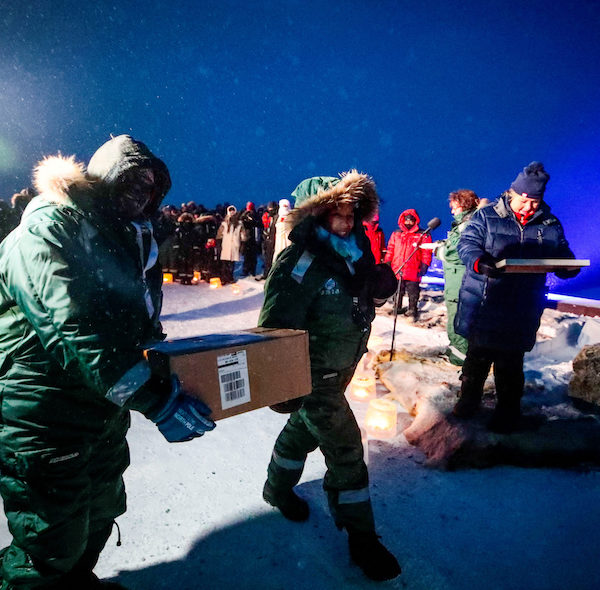🌎 ‘Doomsday’ seed vault gets boost amid food-shortage worries

By Maytaal Angel, Reuters
LONDON — A “DOOMSDAY” seed vault on Spitsbergen island in the Norwegian Arctic archipelago of Svalbard has received its most diverse batch of seed donations yet as efforts to secure the world’s food supplies ramp up amid rising climate concerns.
The Svalbard Global Seed Vault, built to protect the world’s food stock from disasters ranging from nuclear war to global warming, added 19,500 rare seed variety samples from across the world to its collection on Tuesday, taking its total stash to more than 1.2 million.
The vault, set in permafrost caves on an Arctic mountainside halfway between mainland Europe and the North Pole, was launched in 2008 as a backup for the world’s national and regional gene banks that store the genetic code for thousands of plant species.
It has seed samples from nearly every country in the world and played an essential role between 2015 and 2019 in rebuilding seed collections damaged during the war in Syria.
“The whole of humanity relies on the genetic diversity of crops maintained in the world’s gene banks, and the Seed Vault is the last line of defense against the loss of that diversity,” said Sandra Borch, Norway’s agriculture and food minister.
The Global Seed Vault, which also serves as a backup for plant breeders to develop new crop varieties more resistant to climate change, opened its doors to public at large for the first time on Tuesday by launching a free virtual tour of its subterranean seed chambers.
FURTHER READING
• Norway’s Global Seed Vault turns 15
• Iraq and Uruguay deposit crop seeds at Arctic doomsday vault
• If humanity crashes, Svalbard will be there when it comes time to reboot
• ‘Doomsday’ seed vault entrance repaired after thaw of Arctic ice
The chambers, which are only opened three times a year to limit the seeds’ exposure to the outside world, boast temperatures of around -18°.
The virtual-tour launch, as well as the seed deposits from some 20 gene banks, were timed to mark the Global Seed Vault’s 15th anniversary.
“From here in Svalbard, the world looks different. This Seed Vault represents hope, unity and security,” said Stefan Schmitz, the executive director of the Crop Trust, an international non-profit that operates the Global Seed Vault together with the Norwegian authorities.
“In a world where the climate crisis, biodiversity loss, natural catastrophes and conflicts increasingly destabilise our food systems, it has never been more important to prioritise safeguarding these tiny seeds.”
The world used to cultivate over 6,000 different plants, but UN experts say we now get about 40% of our calories from three main crops — maize, wheat and rice — making food supplies vulnerable if climate change causes harvests to fail.
This article has been fact-checked by Arctic Business Journal and Polar Research and Policy Initiative, with the support of the EMIF managed by the Calouste Gulbenkian Foundation.
Disclaimer: The sole responsibility for any content supported by the European Media and Information Fund lies with the author(s) and it may not necessarily reflect the positions of the EMIF and the Fund Partners, the Calouste Gulbenkian Foundation and the European University Institute.
